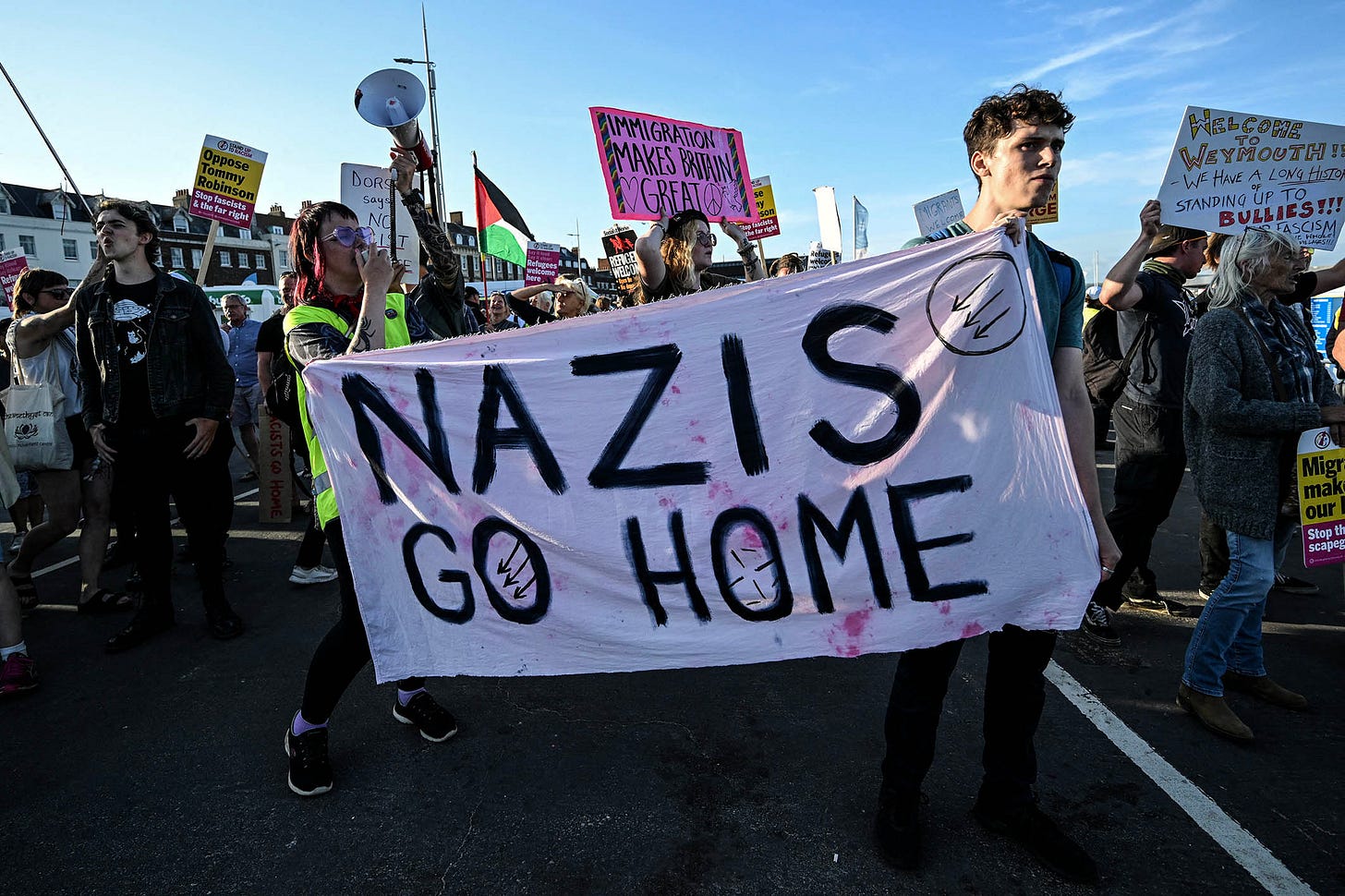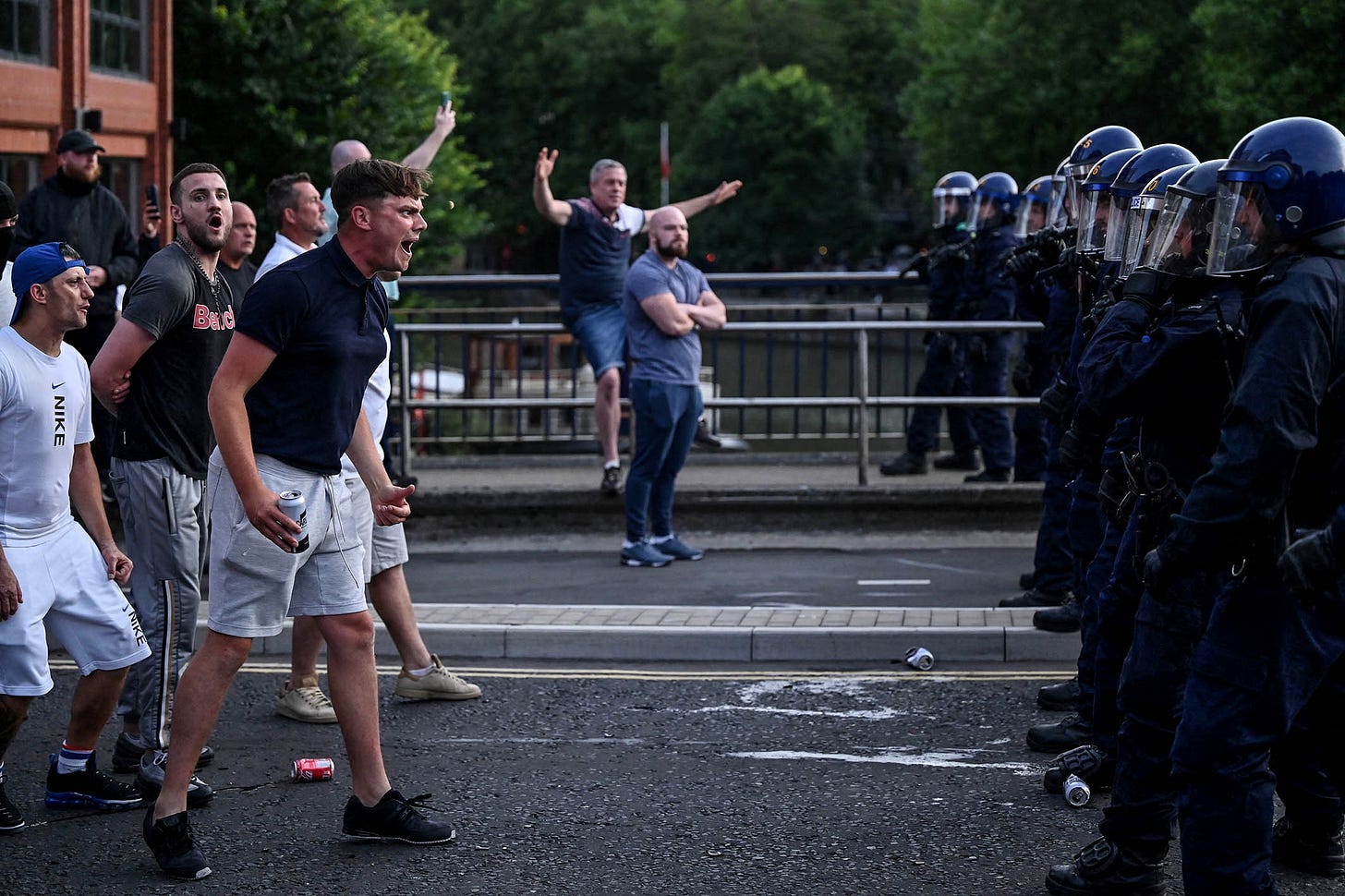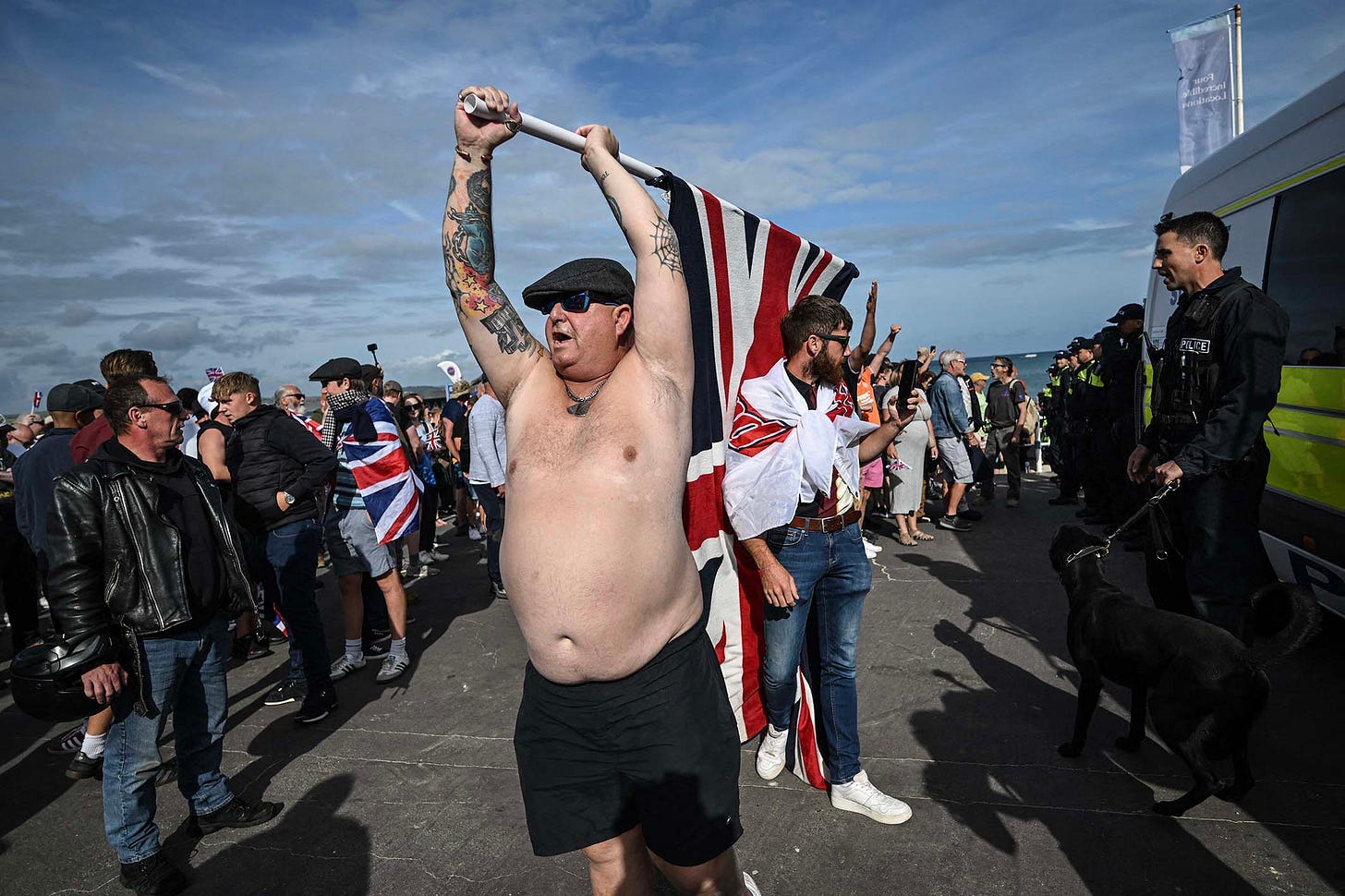Islamophobic violence rips through England
Some 400 people face prison time in the island nation after the far-right targeted migrant and Muslim communities. The counter-protests were bigger.
Kiri Rupiah

Violence swept across English towns and cities this week as gangs of white men and youths attacked members of minority ethnic and religious groups. Muslim people were their main target.
Stoked by hate, fear, hot weather and disinformation, they looted shops, tried to burn down a hotel with people in it, and threatened the lives of anyone not responding to their interrogations in the “right” accent. More than 50 police officers responding to the riots were injured.
The violence began with an attack on a mosque by a gang claiming to be “protesting” against the 29 July murder of three young girls who were killed at a Taylor Swift-themed dance session in Southport, a seaside town located 380km north of the country’s capital London.
The motive for the killing, where 10 children and parents were also injured, is not yet known.
The attacker was born in Wales but, at first, no details about his identity were released because he was under 18. That was an opportunity for people to spread lies. In the hours after, fake news websites and social media posts wrongly claimed that he was a Muslim refugee or asylum seeker. Wealthy populist Nigel Farage – who leads a political party with five seats, or less than 1% of the British Parliament – boosted the claims by insinuating that the anonymity was a ploy to deceive the general public about the attacker’s identity.
Tensions escalated. Lists of hotels where people believed asylum seekers are being housed were circulated on platforms such as Telegram. Hundreds took to the streets of Southport in protests that quickly descended into violence.
After Southport, people tried to spread the violence across the country, but increasingly smaller groups turned out in just 20 towns and cities in England and in Northern Ireland. Scotland and Wales, colonised centuries ago and now part of the UK, did not see such violence.
Media matters
Islamophobia, racism, and race riots have not been a novelty in England since after the world wars of the last century, when a booming economy brought in mass migration.
This week’s riots were different from the historical ones in at least one respect: the role of social media. Using misinformation and virality, the far-right gangs were able to quickly mobilise. They egged each other on with hysteria seeded by fascist and neo-Nazi propaganda like the “great replacement theory” – which claims white populations are being replaced by black and brown ones through immigration.

While platforms like X and Facebook – where algorithms hype content that spreads division and hate – have been key in spreading the violence, print newspapers have a long history of doing the same. The UK’s press is not required to act in the public interest, or balance free speech rights with responsibilities, as is common in republican democracies.
Newspapers like the Daily Mail have repeatedly run covers that incite violence, particularly against minorities and Muslim people. Headlines have included: “UK Muslims helping jihadis”; “Migrants: How many more can we take?”; and “The ‘swarm’ on our streets”.
“This anger and hatred has been incubated by the media,” Christanghelo Godino of the Kanlungan Filipino Consortium, which has been helping people terrified for their lives this week, told The Continent.
As the violence burned out, helped by colder days and the arrest of 400 rioters, the same newspapers began to cover the riots in a less sympathetic tone. Counterprotesters – in their thousands as opposed to the hundreds of rioters – featured on front pages. Photos of convicted rioters were paraded on the same pages. But the language retained a tinge of sympathy. The rioters were still “protesters”. Prime Minister Keir Starmer called them “far-right thugs” even though their violence met the legal threshold of terrorism.
Tough times make scapegoats
The UK has been struggling to find its place in the world since it lost its empire in the 20th century. This has intensified since the Brexit referendum eight years ago. The country has stumbled from one crisis or scandal to another: costly disruptions to trade with Europe; deep cuts to public spending under 14 years of conservative leadership; a botched pandemic response; a cost of living crisis; and corruption.

With so much going wrong, the previous government worked its comfortable relationship with the media to sell easy and populist distractions. Particular focus went to the 30,000 people who arrived illegally in boats in 2023, in an attempt to claim asylum. They would be sent “back home” or to Rwanda. Net migration to the UK last year stood at 685,000 people, or 1% of the population.
“The death throes of the Tory [conservative] government were basically to call lawyers traitors to the country for representing refugees, to pass the most insane bits of legislation in order to be able to deport refugees to Rwanda,” said Satbir Singh, a London-based social justice advocate who has campaigned for the welfare of immigrants for years.
As a result of that toxic rhetoric, minorities in the country have lived under a cloud of hostility for more than a decade. According to police statistics, there has been a growth in hate crimes, especially against Muslim people. Few then are surprised that it culminated into this weekend’s race riots.
“It’s just metastasising,” Singh says. “No one is terribly surprised.”



